In this article we’ll take a closer look at personal armor, and some of the more unconventional versions of it that are out there. Personal armor is just that, something that is designed to protect you from whatever is about to happen.
For some explanation on the different classifications on body armor, take a look at our quick guide here.
Most people focus on vests and gloves, which would also be the most versatile body armor that is in common use. Everyone from doormen to police and federal agents use gloves and vests when dealing with the public, since there is no telling when a threat might surface. But personal armor doesn’t stop there. There are a lot of options for both the professional and the civilian when it comes to personal armor, and we’ll take a quick look at some of the best stuf out there today. Also, we’ll touch on some of the more unconventional methods, but we’ll focus on what is available for “the everyman”.
Let’s start from the top, shall we?
– Helmets.
Riot control and personal armor helmets are completely different from that old motorcycle helmet you’ve got hanging out in the garage. So since your better half won’t let you have the bike, you might as well toss out that helmet as well, if your need is in the personal armor department.
The main objective of bike helmets, skateboard helmets or ski helmets for that matter is to protect your head from sudden blows, delivered by your own body moving. That means that the protection is focused on your head, and nowhere else. Half helmets and the like will protect your skull, but while they will do that much, you are also leaving a lot of other vulnerable places around it open to attack from someone who is actually planning the attack, instead of just the ground or a tree.
So what do you need from a personal armor helmet?
– Face protection. Eyes, nose, ears, mouth. Those need protection as well, and that means a ballistic visor in front of your face. The makeup of these vary from the completely clear visors of most riot helmets, to knight-like visors that are reinforced with metal or composite materials which are stronger but that provides lower visibility for the person wearing it.
Here are a few examples

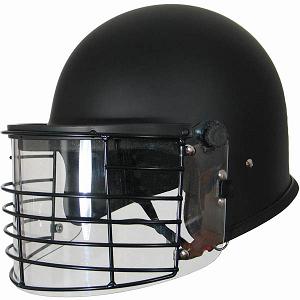

– Gloves
Gloves are very personal, and they need to be tailored to your personal needs. Kevlar has been a favorite for many, many years, but there are other materials out there, such as Spectra, that will protect you as good, or even better than kevlar will, at least when it comes to keeping you movable inside those gloves, and keeping your ability to move as if the gloves weren’t there might just be that little extra advantage that will see you through whatever dangerous situation you find yourself in. Using your weapon, handling tools, frisking someone and actually feeling that knife deep concealed on someone’s body is always first priority. Also, the gloves you wear should protect you from harmful agents such as blood or chemicals, at least for a short time.
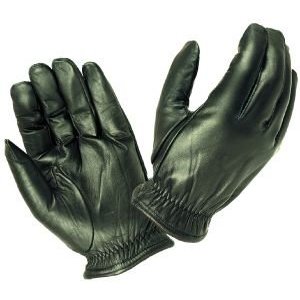
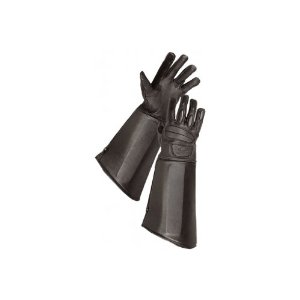
– Vests, suits
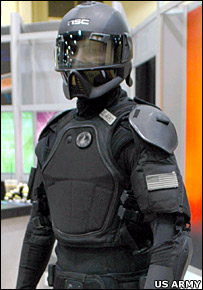
There are several options out there for covering what’s left of your body when the vest, the helmet and the gloves are on. Even with a vest on, there will still be unprotected areas of your body that will immobilize you if they’re hit by either a bullet or some other kind of weapon. A bat to your shin is bound to put you on the ground for quite a while if you don’t wear protection.
Legs, knees, arms and neck are main points to protect. Your neck protection should be built into the helmet. If it’s not, then get a different helmet.
– Legs
There’s a lot to be said for taking care of your knees, and in an instant you can be rendered useless and fragile if you can’t move. Shins are the easiest part of the legs to take out, and that’s why we have to be careful to protect them as best we can while still keeping mobility as high as possible. Armor for your legs aren’t easy, and ideally the armor should be personally fitted. That’s very expensive, though, and that’s not for everyone. There are a few alternatives that would serve you well, but finding them might take a lot of searching and research. Lucky for you, we’ve done most of that research.
In the case of leg protection, you can’t hope to be invulnerable, or as close to it as some other body parts can be, because of the need to keep mobility up. That’s also why we need to focus on impact protection, and that means excluding heavy armor like kevlar and metal plates, and going for lightweight composites, ceramics and hard plastics.
– Feet
In the case of feet protection, you need to pick good boots. This is nothing more complicated than finding boots with composite or steel toe protection, or “kick toes” that will fit your size. Go for 8-10″ tall boots – those will keep your mobility up, and protect your ancles and the lower part of your shin.
There are many good brands out there, but we do especially recommend, on personal experience, 5.11 Tactical.
Some examples of good boots;
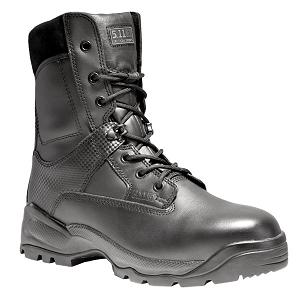
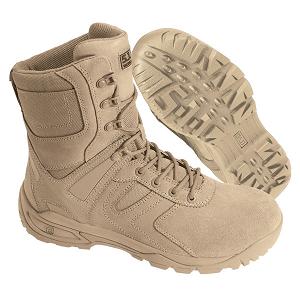

The picture just under the heading “vest, suits”. What kind of helmet is that? Is that a riot gear helmet? And is it available to the public? I think the helmet design is unique and would like to know more about. I’m a motorcycle, ATV, motocross rider looking for unique designs for helmets. Any help would be great, thank you.
Hi Corey.
It’s basically a version of the correctional helmet, which is made for close quarters, indoors. The one in the picture specifically is a concept helmet made for the US Army, and will see service in 2025, if ever.
a substantial iron man suit is convenient to develop with this specific guide
I have read so many content on the topic of the
blogger lovers except this paragraph is genuinely a pleasant post, keep it up.
Without a doubt, this new Playstation 3 Slim comes with all of the toys.
Fix one of the most common problems with your Playstation PS3:.
A quick history about Blizzard is that Blizzard North, who designed
both the Diablo I and II, departed and start designing on Torchlight.
Hi there Dear, are you truly visiting this web site on a regular basis, if so then you
will without doubt get pleasant knowledge.